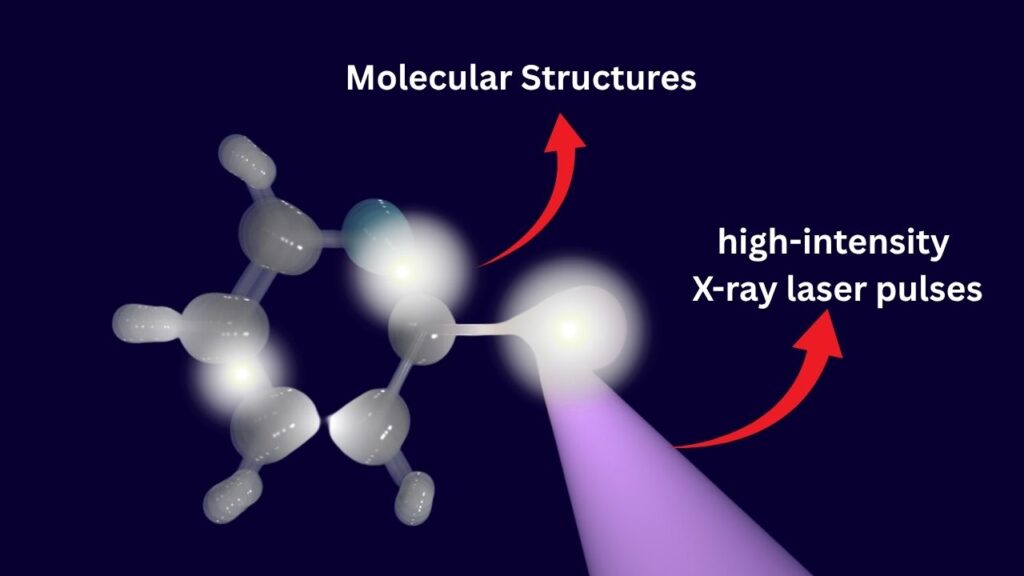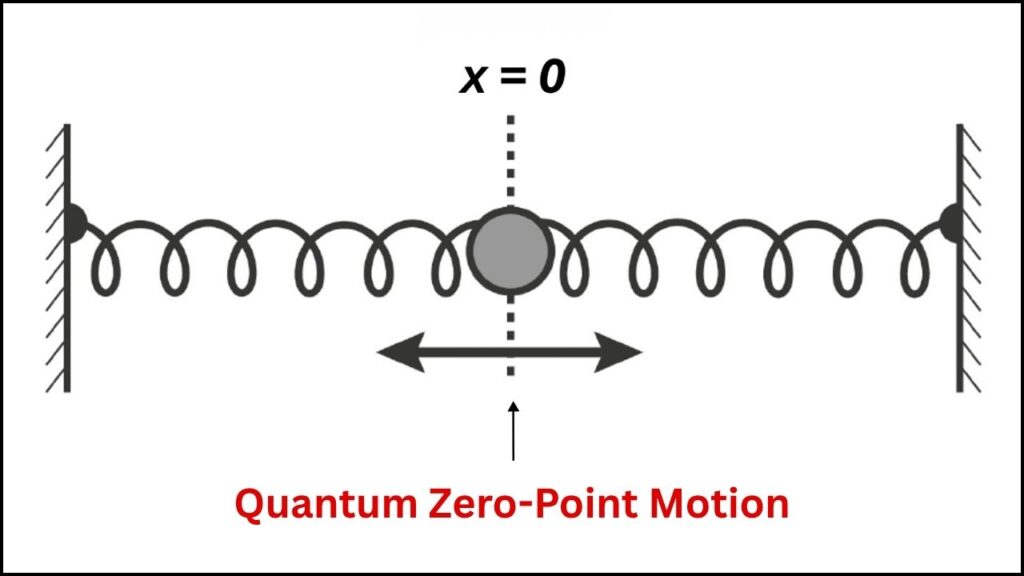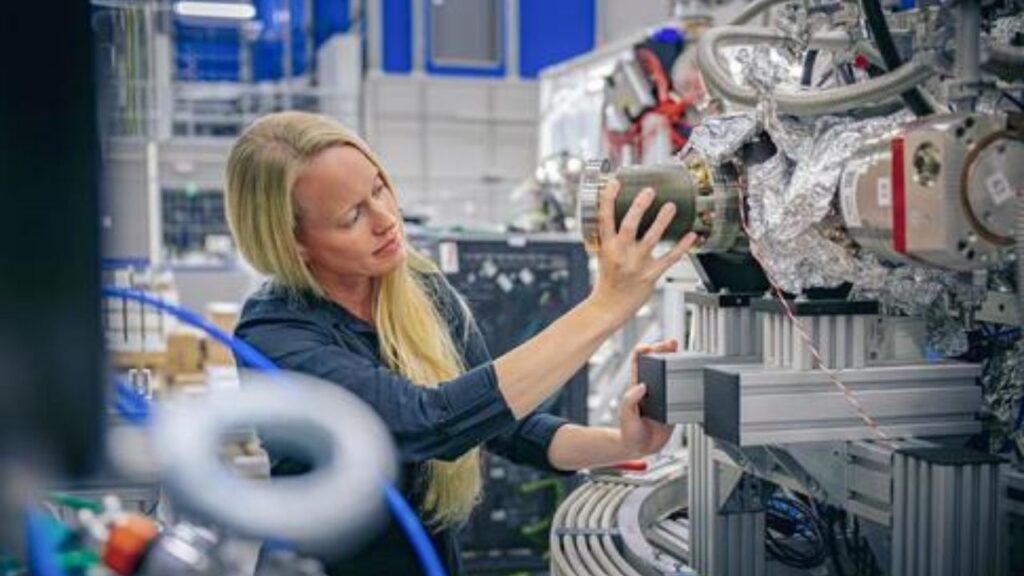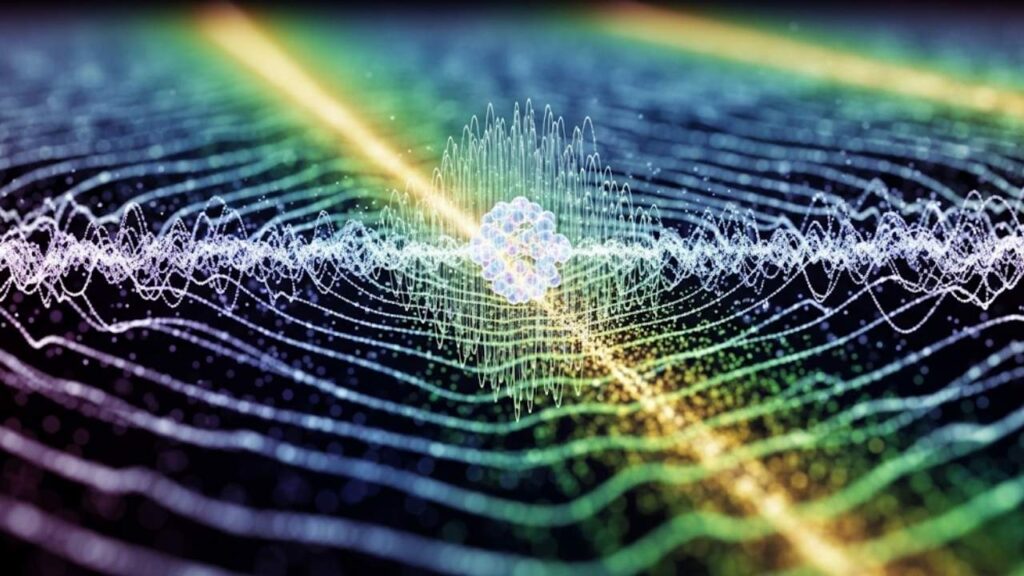Imagine a tiny dance happening at the smallest scales, a dance that never stops—not even when the world is at its absolute coldest. This is the astonishing discovery made by scientists who successfully captured the quantum “eternal dance” of molecules, a phenomenon called zero-point motion. This quantum mechanical behavior means atoms inside molecules vibrate constantly, even at absolute zero temperature, defying our classical intuition.

This breakthrough not only confirms a fundamental aspect of quantum physics but also opens exciting possibilities for science and technology. In this detailed article, you will learn what zero-point motion is, how researchers captured it, why it matters, and what it could mean for the future of materials science, chemistry, and quantum technology. The explanation is crafted to be clear enough for younger readers while offering valuable detail for professional audiences.
Table of Contents
What Is Quantum Zero-Point Motion?
Quantum zero-point motion is a fundamental concept in quantum mechanics describing how atoms in a molecule are never completely still. Even at absolute zero, theoretically the coldest temperature possible (−273.15 °C or 0 Kelvin), atoms retain some residual motion.
How can this happen? The answer lies in the Heisenberg uncertainty principle, which states that one cannot simultaneously know both the exact position and exact velocity of a particle. Because of this uncertainty, particles like atoms cannot occupy a completely fixed position with zero movement—they must always jiggle slightly. This tiny, constant vibration is known as zero-point motion.

Unlike classical vibrations caused by heat, zero-point vibrations:
- Exist even when temperature is at absolute zero.
- Arise from the fundamental quantum nature of particles.
- Are an intrinsic energy called zero-point energy, the lowest possible energy that a quantum system can have.
Visualize atoms locked in an eternal, silent dance that persists beyond the reach of conventional cooling.
How Scientists Captured the Atomic ‘Dance’
For decades, scientists theorized about zero-point motion but capturing it visually—especially in molecules composed of multiple atoms—remained elusive. The challenge was that these motions occur incredibly fast, within the tiniest spaces.
Researchers from Goethe University Frankfurt, collaborating with other institutions, pioneered a way to photograph these atomic vibrations using the European XFEL (X-ray Free Electron Laser) in Hamburg, Germany. This facility generates ultra-intense and ultra-short X-ray laser pulses—powerful enough to “freeze” and image atoms as they move.
The Process: Coulomb Explosion Imaging

The technique used is called Coulomb Explosion Imaging. It involves these steps:
- The X-ray laser pulses strike a molecule, rapidly knocking out electrons from the atoms.
- This sudden loss makes the atoms positively charged, causing them to repel each other violently.
- The molecule explodes into fragments that fly apart.
- Detectors record the directions and speeds of these fragments.
- Scientists use this data to reconstruct the original arrangement of atoms and their vibrational patterns, effectively “seeing” their quantum dance.
This method revealed the correlated motions of atoms, not just individual vibrations but complex, coupled movements called vibrational modes. For example, iodopyridine, a medium-sized molecule with 11 atoms, displays 27 unique vibrational modes. Scientists visualized many of these for the first time.
Scientists Capture Quantum ‘Eternal Dance’ of Molecules for the First Time Ever
| Aspect | Details |
|---|---|
| Phenomenon | Quantum zero-point motion: perpetual atomic vibrations present even at absolute zero |
| Discovery | First direct visualization achieved with Coulomb Explosion Imaging at European XFEL |
| Molecule Studied | Iodopyridine: 11 atoms, 27 vibrational modes |
| Facility | European XFEL, Hamburg, Germany |
| Scientific Principle | Heisenberg uncertainty principle, quantum vibrational modes |
| Applications | Insights into quantum dynamics, chemical reaction mechanisms, quantum materials development |
| Official Resource | European XFEL official website |
The first-ever direct capture of the quantum zero-point motion in molecules marks a milestone in understanding the microscopic world. Atoms perform an eternal, quantum dance, never coming fully to rest, even at absolute zero. This molecular choreography governs much of chemistry and material science at the fundamental level.
Innovative techniques like Coulomb Explosion Imaging and use of powerful X-ray lasers have allowed scientists to witness this dance firsthand, opening new opportunities to harness quantum phenomena in technology and research.
For enthusiasts and professionals alike, this discovery shines a bright light on the invisible quantum rhythms driving the fabric of the molecular world.
Why Does This Discovery Matter?
This achievement is a monumental step in quantum science for several reasons:
- Direct Confirmation: It directly confirms that atoms never come to complete rest, even at absolute zero, visualizing a phenomenon that was theorized but not seen before.
- Understanding Molecular Behavior: Creating a real-space picture of atomic vibrations helps scientists understand the fundamental properties of molecules.
- Chemical Reactions: Vibrations influence how chemical bonds break and form. This insight opens new ways to study and potentially control chemical reactions.
- Materials Science and Technology: Better quantum models can lead to innovations in electronics, superconductors, and nanotechnology.
- Molecular Movies: The techniques developed may allow making ultrafast “movies” of quantum processes, giving unprecedented views of molecular behavior in real-time.
This discovery reflects a growing ability to explore and manipulate quantum phenomena experimentally, beyond theoretical predictions.
Breaking Down Quantum Zero-Point Motion: A Guide
Step 1: Grasp Quantum Vibrations

Atoms in molecules act like tiny springs that vibrate perpetually due to zero-point energy. Even when cooled to absolute zero, they are prevented from settling down by the quantum uncertainties inherent in nature.
Step 2: Understand Vibrational Modes
These atomic vibrations occur not in isolation, but as collective motions called normal modes. These patterns can be simple (like two atoms moving back and forth) or very complex involving many atoms moving in synchrony.
Step 3: Prepare the Molecular Sample
In the lab, molecules like iodopyridine are isolated in vacuum and cooled as much as possible to limit external energy influences.
Step 4: Initiate Coulomb Explosion
Powerful X-ray pulses rapidly strip electrons from the molecule, charging the atoms and causing the molecule to explosively fly apart.
Step 5: Capture the Explosion Data
State-of-the-art detectors record the trajectories of these atomic fragments with incredible precision.
Step 6: Analyze and Decode the Data
Combining experimental data with quantum simulations, scientists reconstruct the correlated atomic vibrations, revealing the zero-point motion dance.
Practical Implications Across Fields
Understanding zero-point motion is more than an academic exercise. It plays a role in:
- Materials Science: Designing advanced materials and quantum devices with predictable properties.
- Catalysis and Chemical Engineering: Controlling reactions on a quantum level for more efficient processes.
- Pharmaceuticals: Predicting how drugs interact with targets by accounting for subtle molecular motions.
- Quantum Computing: Informing the design of qubits and quantum sensors that leverage molecule-level quantum states.
Physicists Discover Planckian Time Limit in Heavy Fermions — A Quantum Tech Leap
Breakthrough: Scientists Unlock Universal Quantum Computing With Exotic Anyons
Gaussian Processes Provide a New Path Toward Quantum Machine Learning
FAQs About Scientists Capture Quantum ‘Eternal Dance’ of Molecules for the First Time Ever
Q1: What is zero-point energy in simple terms?
Zero-point energy is the lowest amount of energy something quantum—like an atom or molecule—can have. It means particles always move a bit, even in the coldest, stillest conditions.
Q2: How does the uncertainty principle cause motion?
Because you cannot know an atom’s exact position and speed at the same time, the atom can’t ever stay perfectly still. This forces a minimum vibration or motion.
Q3: What exactly is Coulomb Explosion Imaging?
It’s an imaging method where scientists use intense X-rays to rip electrons from molecules, making atoms repel and explode apart. By tracking these fragments, they rebuild a picture of how atoms move inside molecules.
Q4: Can this technique be used on bigger molecules?
Currently, visualizing zero-point motion in medium-sized molecules is possible. Larger, more complex molecules pose greater challenges but future advances may extend its reach.
Q5: How might this discovery impact everyday technology?
By improving our knowledge of quantum behavior in molecules, it helps develop better materials, drugs, and quantum devices, ultimately influencing technology, health, and energy.



















